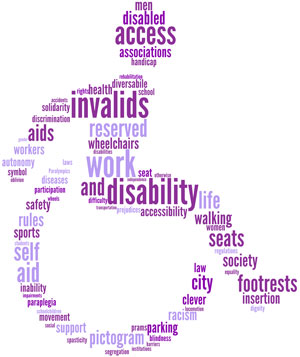KANBrief 2/15

As long ago as 2001, ISO called in ISO/IEC Guide 71 "Guide for addressing accessibility in standards" for accessibility aspects to be considered in standards. Support for this is available in the form of ISO/TR 22411 (Ergonomics data and guidelines for the application of ISO/IEC Guide 71 to products and services to address the needs of older persons and persons with disabilities), which provides ergonomic data and guidance on application of the ISO guide. This Technical Report, published in 2008, is now also available in German in the form of DIN SPEC 33421.
In a world dominated by technology, it is not always easy for the UN Convention on the Rights of Persons with Disabilities, and its goal of consideration being given to the interests of the elderly and disabled, to be implemented in practice. Firstly, it is not always clear what skills these people can contribute to the accomplishment of tasks. A further challenge then lies in formulating the specific needs of people with disabilities in the language of technology. An example is the space required by a wheelchair during the planning of buildings.
A generalist approach is needed
In the same way that any product standard must take account of the dimensions and physical forces of the human body, the complex area of inclusion requires a generic approach with uniform requirements for the same issues. Clarifying this problem in each individual technical field for special applications would be an insurmountable task in view of the huge number of product-specific standards committees and the shortage of real experts on accessibility.
To date, papers in these areas have been limited to political intent; the translation of this intent into dimensional specifications and minimum requirements presents major problems even for the experts on the standards committees for specific products and services. This gap in the knowledge required for implementation has to a large degree been closed by the ISO/TR 22411:2008 Technical Report, which has now also been published in German in the form of DIN SPEC 33421.
ISO/TR 22411 makes the general tangible
The Technical Report supports ISO/IEC Guide 71 and provides ergonomic data and findings on human sensory, physical and cognitive abilities that can be used directly. It also contains information on taking allergies into consideration. It constitutes a guide to the design of accessible products, services and environments that are to be found in daily life in the market for consumer products and at the workplace. For example, the operating force is stated for an accessible door handle that a person with impaired motor ability is still able to exert in order to trigger opening of the door. Some of the measures listed also support the interoperability of products with assistive technologies and equipment.
The structure of the report follows that of ISO/IEC Guide 71. For each clause of the guide it includes an explanation of the concepts, together with specific dimensional data, forces, angles, etc. Like the percentiles of human body dimensions, these data can be applied to any given technical problem, whether in standards for publicly accessible rooms, for the design of workplaces – such as offices – or in machinery standards.
The Technical Report is intended in the first instance for standards committees, for whom it serves to explain how to include the issue of accessibility in standards and related documents. However, it is also useful for manufacturers, developers and service providers during the design of products and systems.
Complex development
During the complex process of development of this Technical Report, it was not always possible to draw upon validated, recognized findings. The stated data serving as a basis were obtained in the course of protracted negotiations between the few experts in the international specialist community.
The process is also not yet complete. No sooner was the first edition of the ISO/TR published than earnest work was begun on its revision. The objective is for the expertise to be substantially extended and classified in a more practical form. It can therefore be assumed that the existing knowledge will be continually extended. All experts able to contribute to this process are invited to contact the responsible standards committees. This is the only way by which the expertise required for application of the data can be introduced as comprehensibly as possible into wider standards development activity, ideally for all areas of technology, through the ergonomics standards.
Bernhard Kempen Norbert Breutmann
bernhard.kempen@din.de n.breutmann@arbeitgeber.de